Abstract
Regions of abrupt genetic change, which result from either rapid spatial change of selective pressures or limited admixture, were investigated in Europe and Asia on the basis of eight red cell markers typed in 960 samples. Two methods were employed, one based on genetic distances and one on evaluation of the first derivative of the surfaces representing allele-frequency variation. Genetic divergence tends to be maximal between populations that are separated by physical factors (mountain ranges and seas) but also separated by cultural barriers (different language affiliation). This suggests that mating isolation, rather than adaptive response to environmental change, accounts for spatially abrupt genetic change at the loci studied and that cultural differences associated with language contribute to isolating populations. Although selection may have determined two wide allele-frequency gradients, the genetic structure of European and Asian populations seems primarily to reflect isolation by distance when investigated on a small scale and migration patterns (or absence of migration) when investigated on a larger scale.
Full text
PDF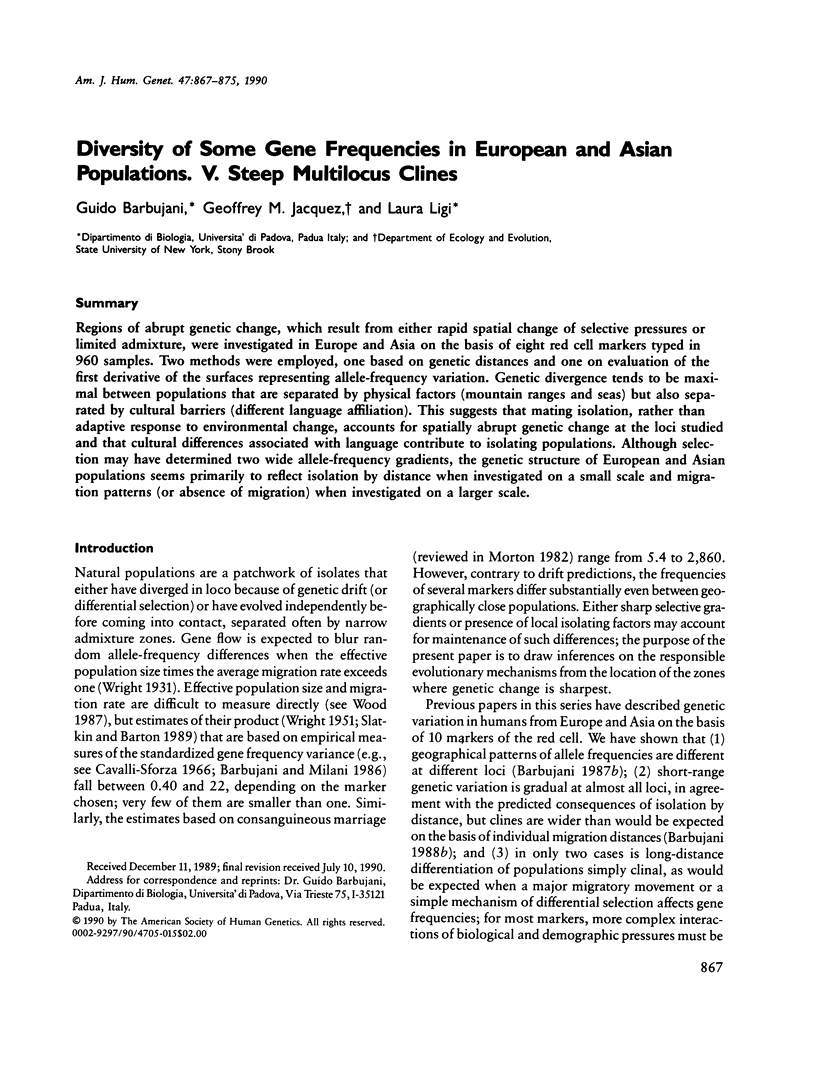
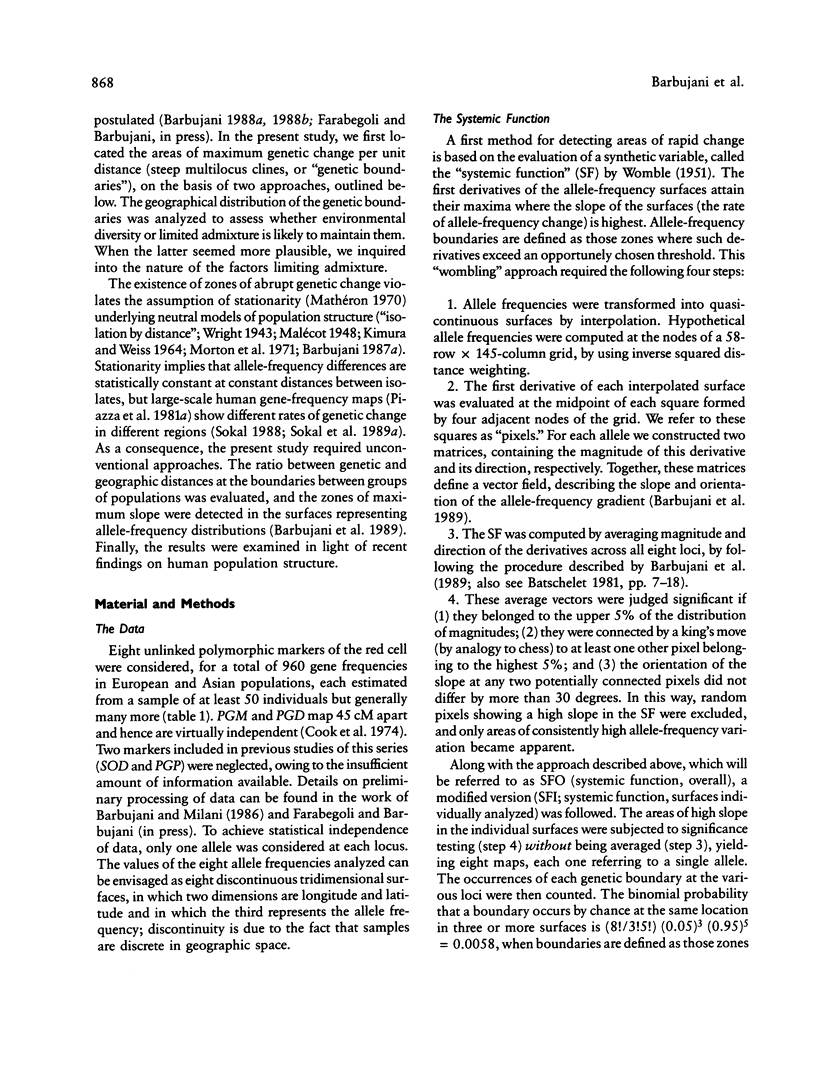
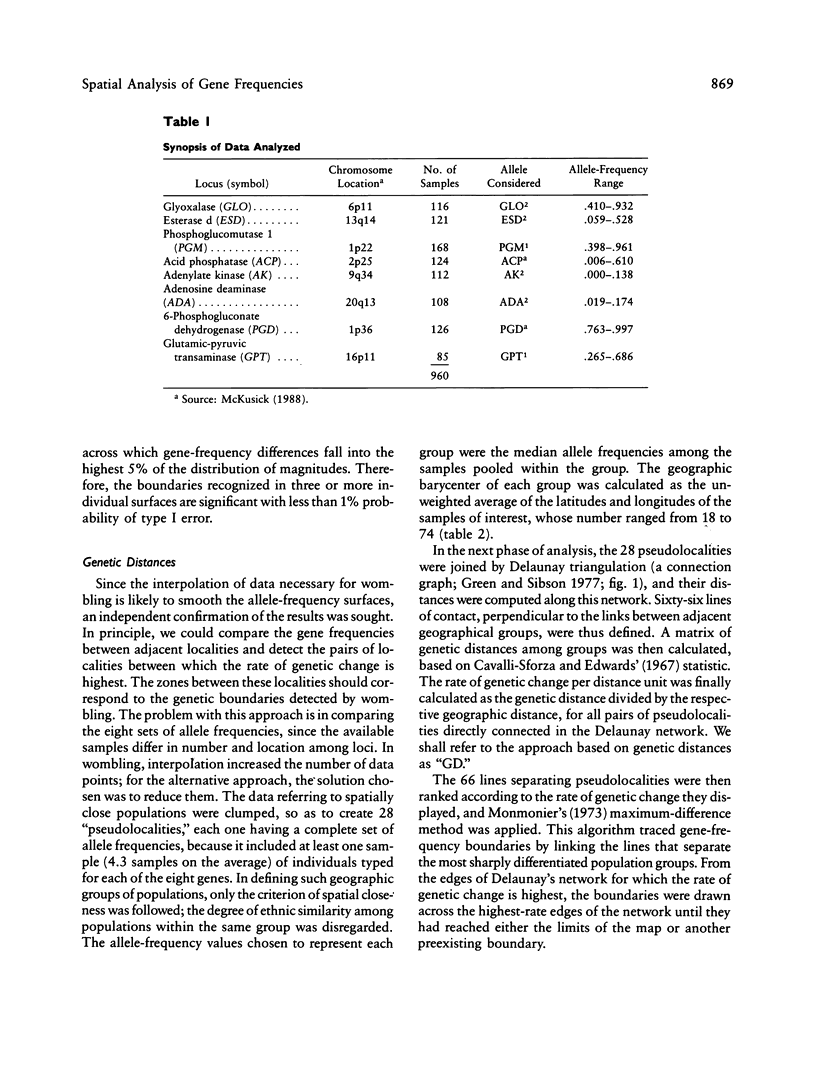
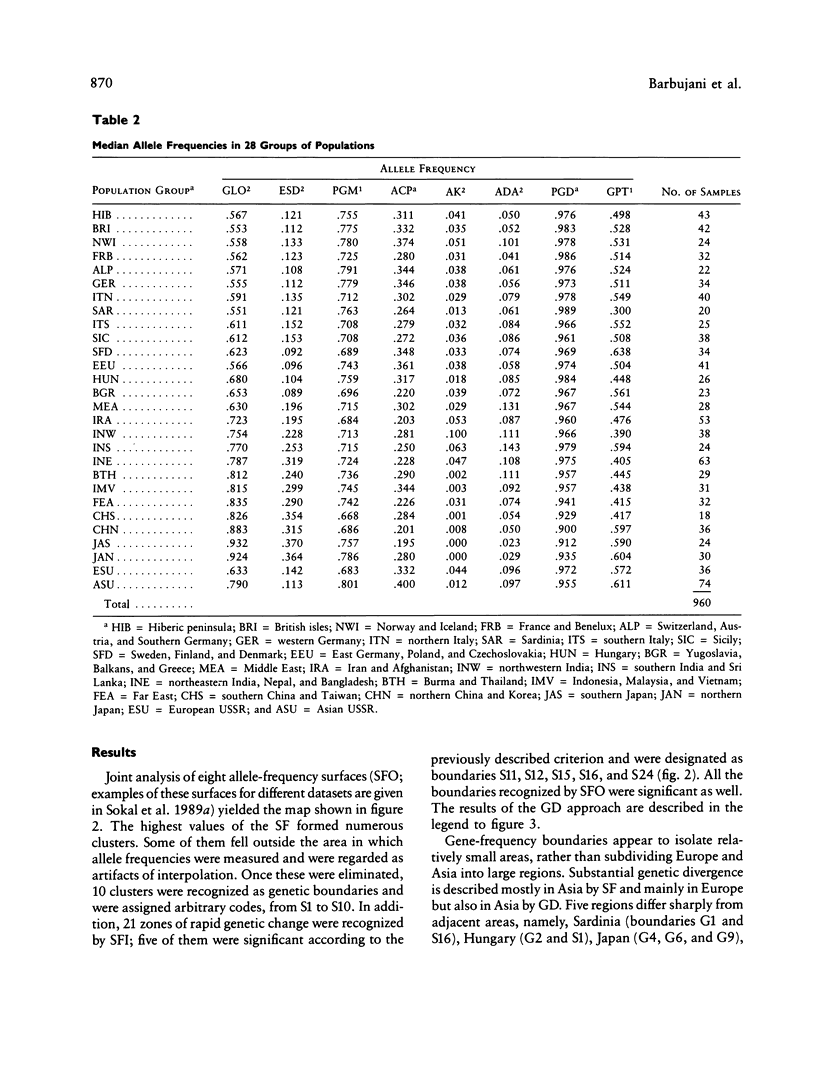
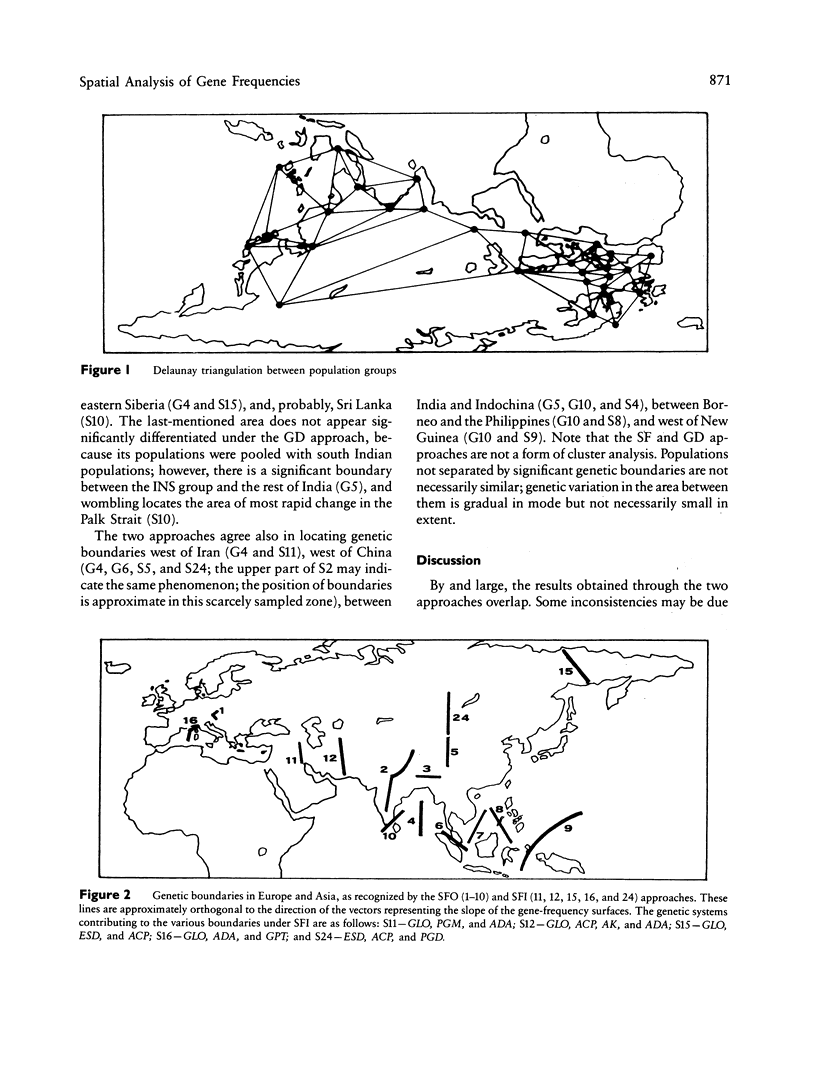
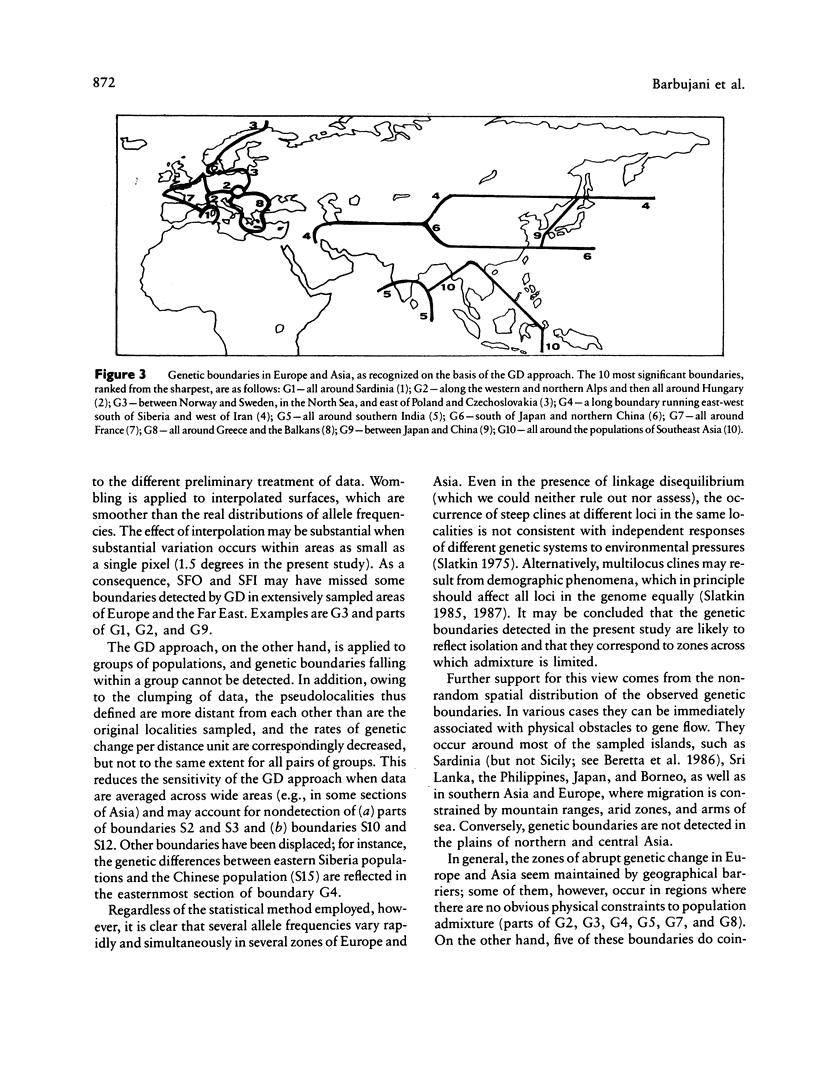

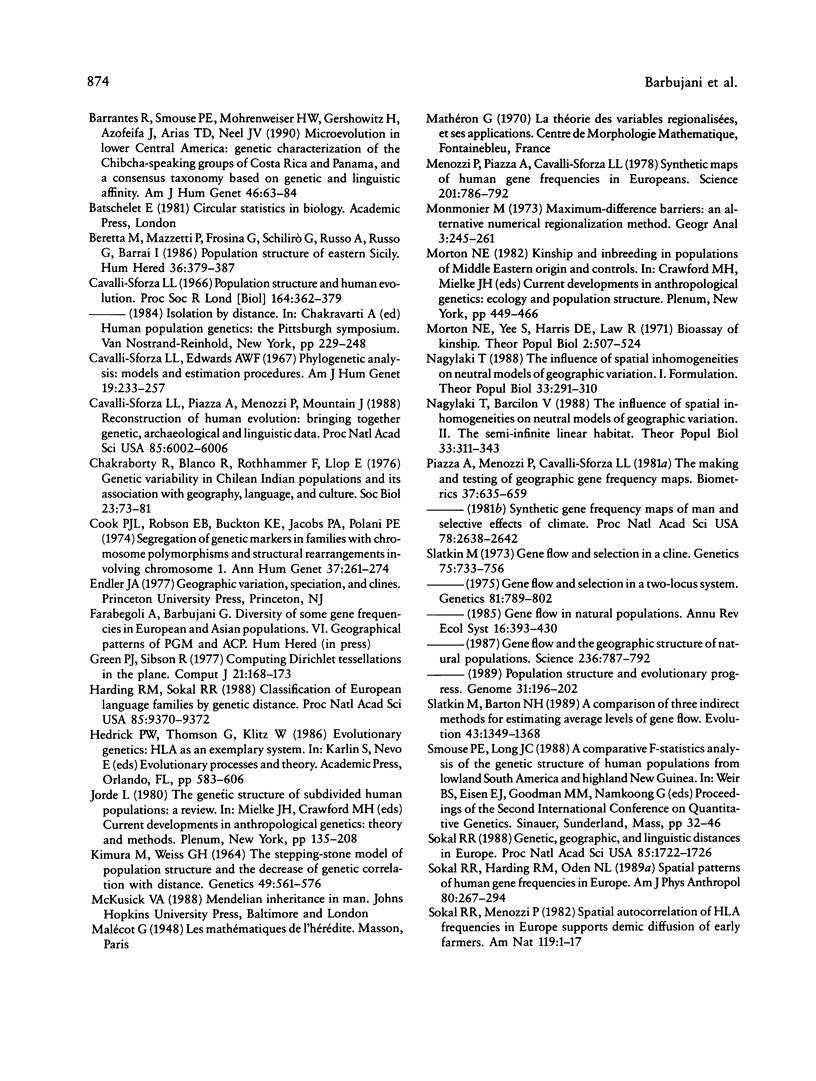
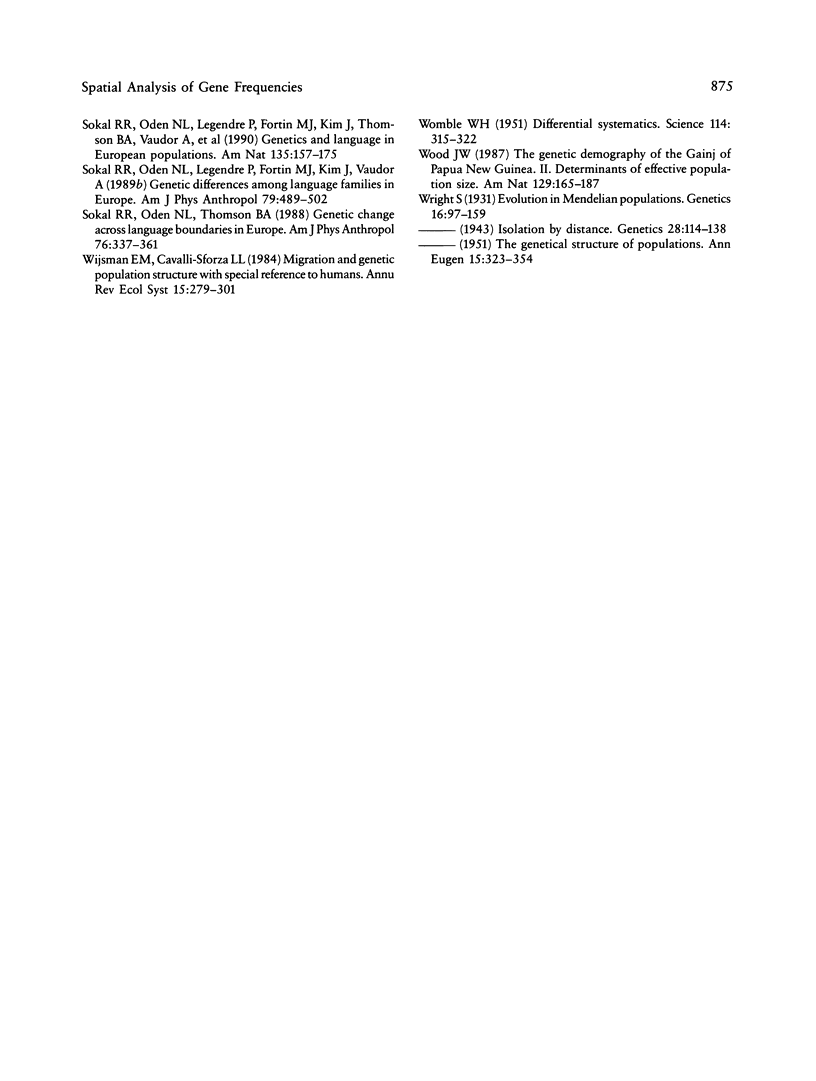
Selected References
These references are in PubMed. This may not be the complete list of references from this article.
- Barbujani G. Autocorrelation of gene frequencies under isolation by distance. Genetics. 1987 Dec;117(4):777–782. doi: 10.1093/genetics/117.4.777. [DOI] [PMC free article] [PubMed] [Google Scholar]
- Barbujani G., Sokal R. R. Zones of sharp genetic change in Europe are also linguistic boundaries. Proc Natl Acad Sci U S A. 1990 Mar;87(5):1816–1819. doi: 10.1073/pnas.87.5.1816. [DOI] [PMC free article] [PubMed] [Google Scholar]
- Barrantes R., Smouse P. E., Mohrenweiser H. W., Gershowitz H., Azofeifa J., Arias T. D., Neel J. V. Microevolution in lower Central America: genetic characterization of the Chibcha-speaking groups of Costa Rica and Panama, and a consensus taxonomy based on genetic and linguistic affinity. Am J Hum Genet. 1990 Jan;46(1):63–84. [PMC free article] [PubMed] [Google Scholar]
- Beretta M., Mazzetti P., Frosina G., Schilirò G., Russo A., Russo G., Barrai I. Population structure of eastern Sicily. Hum Hered. 1986;36(6):379–387. doi: 10.1159/000153662. [DOI] [PubMed] [Google Scholar]
- Cavalli-Sforza L. L., Edwards A. W. Phylogenetic analysis. Models and estimation procedures. Am J Hum Genet. 1967 May;19(3 Pt 1):233–257. [PMC free article] [PubMed] [Google Scholar]
- Cavalli-Sforza L. L., Piazza A., Menozzi P., Mountain J. Reconstruction of human evolution: bringing together genetic, archaeological, and linguistic data. Proc Natl Acad Sci U S A. 1988 Aug;85(16):6002–6006. doi: 10.1073/pnas.85.16.6002. [DOI] [PMC free article] [PubMed] [Google Scholar]
- Cavalli-Sforza L. L. Population structure and human evolution. Proc R Soc Lond B Biol Sci. 1966 Mar 22;164(995):362–379. doi: 10.1098/rspb.1966.0038. [DOI] [PubMed] [Google Scholar]
- Chakraborty R., Blanco R., Rothhammer F., Llop E. Genetic variability in Chilean Indian populations and its association with geography, language, and culture. Soc Biol. 1976 Spring;23(1):73–81. doi: 10.1080/19485565.1976.9988205. [DOI] [PubMed] [Google Scholar]
- Cook P. J., Robson E. B., Buckton K. E., Jacobs P. A., Polani P. E. Segregation of genetic markers in families with chromosome polymorphisms and structural rearrangements involving chromosome 1. Ann Hum Genet. 1974 Jan;37(3):261–274. doi: 10.1111/j.1469-1809.1974.tb01834.x. [DOI] [PubMed] [Google Scholar]
- Harding R. M., Sokal R. R. Classification of the European language families by genetic distance. Proc Natl Acad Sci U S A. 1988 Dec;85(23):9370–9372. doi: 10.1073/pnas.85.23.9370. [DOI] [PMC free article] [PubMed] [Google Scholar]
- Kimura M, Weiss G H. The Stepping Stone Model of Population Structure and the Decrease of Genetic Correlation with Distance. Genetics. 1964 Apr;49(4):561–576. doi: 10.1093/genetics/49.4.561. [DOI] [PMC free article] [PubMed] [Google Scholar]
- Morton N. E., Yee S., Harris D. E., Lew R. Bioassay of kinship. Theor Popul Biol. 1971 Dec;2(4):507–524. doi: 10.1016/0040-5809(71)90038-4. [DOI] [PubMed] [Google Scholar]
- Slatkin M. Gene flow and selection in a cline. Genetics. 1973 Dec;75(4):733–756. doi: 10.1093/genetics/75.4.733. [DOI] [PMC free article] [PubMed] [Google Scholar]
- Sokal R. R. Genetic, geographic, and linguistic distances in Europe. Proc Natl Acad Sci U S A. 1988 Mar;85(5):1722–1726. doi: 10.1073/pnas.85.5.1722. [DOI] [PMC free article] [PubMed] [Google Scholar]
- Sokal R. R., Harding R. M., Oden N. L. Spatial patterns of human gene frequencies in Europe. Am J Phys Anthropol. 1989 Nov;80(3):267–294. doi: 10.1002/ajpa.1330800302. [DOI] [PubMed] [Google Scholar]
- Sokal R. R., Oden N. L., Legendre P., Fortin M. J., Kim J. Y., Vaudor A. Genetic differences among language families in Europe. Am J Phys Anthropol. 1989 Aug;79(4):489–502. doi: 10.1002/ajpa.1330790406. [DOI] [PubMed] [Google Scholar]
- Sokal R. R., Oden N. L., Thomson B. A. Genetic changes across language boundaries in Europe. Am J Phys Anthropol. 1988 Jul;76(3):337–361. doi: 10.1002/ajpa.1330760308. [DOI] [PubMed] [Google Scholar]
- WOMBLE W. H. Differential systematics. Science. 1951 Sep 28;114(2961):315–322. doi: 10.1126/science.114.2961.315. [DOI] [PubMed] [Google Scholar]
- Wright S. Evolution in Mendelian Populations. Genetics. 1931 Mar;16(2):97–159. doi: 10.1093/genetics/16.2.97. [DOI] [PMC free article] [PubMed] [Google Scholar]


